- Home
- James Patterson
Private India Page 4
Private India Read online
Page 4
She sighed. Santosh had the sense that she had sat down. It was late there in Bangkok. “That’s very kind of you, Mr. Wagh. This is very, very sad. We’re all in a state of shock. How may I be of help?”
“Dr. Jaiyen was a reconstructive surgeon?”
“She was. A very good one. And if you’re thinking that that’s the usual kind of disingenuous rubbish I’d trot out in the circumstances then you’d be wrong. She really was a good surgeon. One of the best.”
“I’m sorry, Dr. Uwwano. Please be reassured that myself and my colleagues are doing everything we can to try and catch her killer. If you’ll allow me to ask some questions. I’m given to understand that Dr. Jaiyen reported to you, is that right?”
“Yes. I was her senior in the hospital’s Reconstructive Surgery team.”
“And what does that involve exactly—reconstructive surgery?”
“It’s as broad as it sounds, Mr. Wagh. Whether it be for cosmetic or psychological reasons, in the aftermath of a car crash …”
Santosh froze, feeling as though he’d been slapped. On the other side of the desk, Nisha watched him carefully, concern on her face, then leaned forward, whispering, “Boss?”
“Mr. Wagh?” the doctor was saying.
He composed himself. “Sorry, Dr. Uwwano. Do go on.”
“Well, I think I’d finished, really,” said Dr. Uwwano.
Nisha relaxed back into her seat, dragging a hand through her hair and watching him warily.
“Of course, of course,” said Santosh. He waved “everything’s okay” to Nisha. “Well, you could tell me, what was the purpose of Dr. Jaiyen’s visit to Mumbai?”
“It was a personal visit,” said Uwwano. “She told me it was to meet an old friend. She applied for a week’s leave of absence in order to take the trip.”
“Did she tell you the name of the friend she planned to meet?” asked Santosh.
“No,” replied Uwwano. “She was rather reserved about her personal life and I did not feel like prying.”
“Was anything troubling Dr. Jaiyen? Did she have any problems in her professional life? And what about her family life? Was it normal?”
“She was happily married,” replied Uwwano. “She did not have any kids, though. No, as far as I can tell, she had no worries. The only surviving family member other than her husband is her mother who lives in Chiang Mai.”
“Had Dr. Jaiyen performed any surgeries that went wrong?” asked Santosh. “Any instances of lawsuits or complaints by patients?”
“No. As I said, Dr. Jaiyen was one of our best surgeons,” explained Uwwano. “I’m having a hard time trying to find a suitable person to fill her shoes.”
Later, of course, Santosh would realize the mistake he had made when he spoke to Dr. Uwwano, but for now he wished her good day and ended the call. And then, when Nisha had left his office, he reached for the bottle.
Chapter 14
IT WAS PAST eight that night when Mubeen reached Mumbai’s infamous police morgue at Cooper Hospital. Strong stomach or not, he’d been dreading his visit to this most dilapidated of the city’s facilities. What’s more, the man he was meeting, Dr. Zafar, had a certain reputation for eccentricity.
He got out of his van and crept past the muddy porch with a handkerchief held to his nose. The smell was overpowering, almost the equivalent of a few dozen dead rats decaying in a corner of the filthy building. Mubeen knew better, though. The overwhelming stench was not from dead rats but from rotting human bodies. It was the stench of death.
Mubeen could hear his own footsteps echo as he reached the dark entrance, a single light bulb casting an eerie glow. He began walking through the long, dimly lit passage. On both sides were gurneys bearing human forms covered in sheets. Despite his training, Mubeen felt a hollow in the pit of his stomach. He swallowed hard as he forced himself to cross the passage lined with cadavers.
He felt something move against his foot and looked down to see a massive gutter rat scurry away with a piece of flesh in its mouth. A shudder went down Mubeen’s spine and he felt his hair stand on end.
Further ahead he could see a glimmer of light emerging from a room. He quickened his pace to get there. As he crossed the doorway, he felt himself slipping and had to reach out and grab hold of a gurney to prevent himself from falling. He glanced downwards and realized that he was standing on a floor slick with blood, fluids, and human tissue. He pulled his hand away in shock as he realized that he was holding on to a frozen limb of a cadaver rather than the steel frame of a gurney.
“Never knew you would come so late,” boomed a voice behind him. Mubeen spun around to see a man dressed in green surgical scrubs, surrounded by a few dozen more gurneys containing decaying corpses. The voice belonged to Dr. Zafar, the police surgeon. Mubeen had reached the autopsy center in the police morgue of Cooper Hospital.
The morgue received around fifteen corpses daily and a third of these were without claimants. As per official policy, the police had to search for claimants for seven days before allowing disposal. Unfortunately, this was a slow process. Disposal happened at the rate of three or four bodies per day, thus resulting in a pile-up of more than a hundred cadavers in a fifty-five-rack morgue.
Dr. Zafar looked at Mubeen and smiled. He was wearing his surgical mask so the smile was only discernible from the twinkle in his eyes. “How can you keep cheerful in a hellhole like this?” asked Mubeen as he walked across to Zafar, carefully avoiding the puddles on the floor but grateful for the immediate presence of another living human.
“A smile is a curve that sets everything straight,” laughed Zafar, taking off his mask and applying some Vicks Vaporub under his nose to neutralize the permanently foul odor of the place. “I am used to this hellhole.”
Mubeen quietly thanked his stars that he did not have to work in conditions like those that Zafar worked in.
“Your bodies are ready,” announced the police surgeon, opening the door to the refrigeration chamber, like a baker announcing a fresh batch of bread from the oven. Mubeen helped him pull out the two tagged corpses and load them on gurneys.
“Would you like to carry out the autopsies here?” asked Zafar.
“No,” replied Mubeen. “I need the equipment in my own lab. If you don’t mind, I’ll simply take the bodies and share the results with you by email.”
“I need to be present during the autopsy, as instructed by Rupesh,” replied Zafar apologetically. “Either you carry out the autopsies here or I come to your lab.”
Mubeen thought about this. All he wanted was to get the hell out of Zafar’s ghoulish morgue. He made up his mind quickly. “Let’s get these loaded into my van. You may come with me.”
“I would have got one of my assistants to help move the corpses if you had showed up before eight o’clock,” explained Dr. Zafar. “Unfortunately at this time it’s only me in this place.”
Zafar discarded his scrubs and washed his hands with soap and hot water before helping Mubeen roll the gurneys back to the white van belonging to Private India. Both men loaded them inside then climbed in the front.
Mubeen drove out of Cooper Hospital and headed toward Colaba. On reaching Private India’s office block, he drove into a parking garage at the rear of the building. The door closed behind them and lights came on automatically. He flicked a switch on his hand-held remote and the floor of the garage began slowly rising. Within two minutes the van had been transported into Mubeen’s state-of-the-art medical and forensics facility in the heart of Private India’s office complex.
The contrast with the Cooper Hospital autopsy center could not be more apparent. Mubeen’s lab was sophisticated, modern, and spotlessly clean. Gleaming white tables illuminated by shafts of light supplied by overhead energy-efficient fixtures ran the entire length of the lab.
It was equipped with the very latest tools, including a new machine that combined multi-slice computed tomography with magnetic resonance imaging to produce a virtual autopsy in 3D that could easily
detect internal bleeding, bullet paths, and hidden fractures, hard to find with a traditional autopsy. Spectrometers for detection of explosives and illegal drug residues dotted one side of the laboratory, while equipment for the analysis of bloodstains, fingerprints, DNA, hair, fibers, and other trace evidence occupied the rest. A newly acquired device that could accurately identify specific dyes in acrylics, cotton, and other fibers occupied a table of its own.
Having unloaded the corpses from the gurneys, Mubeen began by carefully examining the necks of both victims with a dermascope.
“What are we looking for?” asked Zafar, as he glanced around the facilities, somewhat awed by the infrastructure available to Mubeen.
“Inflamed edges,” replied Mubeen, continuing to scan the skin surface with his dermascope and handing over another one to Zafar so that he could work in parallel.
“Inflammation is absent,” he said into the cordless microphone on his collar. “A clear sign that these victims were dead before being strung up.”
Next, Mubeen and Zafar loaded each body into the MRI machine. As the neck scans of the victims showed up on the bank of high-resolution monitors, the answer became apparent.
Once again speaking into the microphone, Mubeen said, “The neck’s hyoid bone usually breaks during strangulation but rarely during hanging. In both corpses the hyoid bones are found broken. It is my considered opinion that we are dealing with a strangler, not a hangman.”
Chapter 15
“HAVE WE CHECKED the cell phones that were discovered at both crime scenes?” asked Santosh, turning to Hari.
Private India’s core investigation team was seated in the conference room for a meeting and Santosh was reviewing their progress.
Hari cleared his throat before speaking. “Both phones were in working order. The phone belonging to Dr. Kanya Jaiyen was only used for conversations with two other numbers. On the other hand, the phone of the journalist Bhavna Choksi was used much more extensively.”
“You say that the Thai doctor’s phone only communicated with two other numbers. Do we know whose numbers they were?” asked Santosh.
“That was very easy to figure out,” replied Hari. “One of the numbers belonged to Bhavna Choksi.”
“So it’s evident that our two victims knew each other,” observed Santosh. He shot Nisha a gleeful look. “There’s our connection.”
Hari nodded. “Oh yes. Kanya Jaiyen and Bhavna Choksi had several phone conversations on the day that Jaiyen was killed,” he said. “The problem is that the other number that communicated with Kanya Jaiyen was from a prepaid SIM. The name and address provided to register the SIM are false and there is simply no way to trace the actual caller.”
“Given the fact that there was no sign of a break-in at either crime scene, it’s highly probable that the murderer knew both victims,” said Santosh. “It’s very likely that the second SIM showing up on Kanya Jaiyen’s call logs belongs to the killer.”
“Either that or the killer knew enough about their routine to be able to get into their living spaces,” said Nisha, looking up from her smartphone.
“Do we know whether either woman was sexually assaulted?” asked Santosh, directing his question at Mubeen. “Any indications of rape?”
“No sexual assault in either case …” replied Mubeen, “no traces of blood, saliva, or semen. At both crime scenes we have single strands of hair. The strands match under the microscope … They came from the same head.”
“Any luck with DNA?” asked Santosh.
“No roots present, hence no DNA,” said Mubeen. “I tried searching for nuclear DNA in the hair shaft but none was present.”
“What about time of death?” asked Santosh, closing his eyes to think. “Do we now have a precise idea regarding when these women died?”
“Kanya Jaiyen was killed between eight and ten on Sunday night,” answered Mubeen. “This can be further narrowed down by the CCTV footage, which showed the suspected killer going into her room at eight fifty-one and leaving at two minutes past nine.”
“And Bhavna Choksi?” asked Santosh.
“My medical estimate is between eight thirty and ten on Monday morning. Given the fact that the cleaning lady discovered the body at nine thirty, we can safely assume that time of death is between eight thirty and nine thirty.”
There was silence. Santosh got up from the table and began to pace the conference room, an action that made everyone else rather uncomfortable. He had an annoying habit of popping up behind them unexpectedly.
“Do you mind if I leave you for a moment?” asked Mubeen. “I was in the middle of a critical test and should have the results in a few minutes.” Santosh nodded irritably as Mubeen got up to leave the conference room.
“Why don’t we release his picture to the press?” asked Nisha.
“He is waiting for us to do precisely that,” said Santosh. “Look at the crime scenes and all the props around the bodies. Consider the fact that the second victim is a newspaper reporter. The strangler is hungry for publicity. Give the murders some extra column inches and you will see the body count increase. Yes, the body count will go up.”
“You’re right,” agreed Nisha. “It may also send the city into a panic. No one knows that there have been two women strangled in similar fashion. As of now, they are simply two unrelated murders in a city that is famous for its high crime rate. Any public disclosure could make the murderer that much more careful. We would rather have a careless perpetrator.”
“We also need to keep in mind,” said Santosh, “the possibility that the person in question may simply have been a visitor. We have no clear evidence linking them to the murder. On the whole, it’s better that we keep this under wraps.” He settled down in his chair. Within a few seconds he was up again and over behind Hari.
“For a moment,” he said, “let’s focus on the fact that both women were discovered with a variety of objects tied to their hands and feet with string.”
“I’m stumped on that one,” Nisha admitted. “A lotus flower, a dining fork, and a Viking helmet at the first scene; a rosary and a bucket of water at the second. The murderer is obviously trying to tell us something but I wish I knew what.”
“Have we contacted Dr. Kanya Jaiyen’s relatives?” asked Santosh.
“We have informed her husband in Thailand,” replied Nisha. “Her body will be sent home via a Thai Airways flight to Bangkok this evening.”
“What about the suitcase in her hotel room? Anything of importance?”
“Just personal effects—clothes, shoes, toiletries, jewelry, makeup, and medicines,” said Hari. “We found her passport, some cash, and her American Express credit card. The card had not been used in Mumbai except to guarantee her reservation at the hotel.”
“Have we checked relatives and employers of the journalist?” asked Santosh.
“No family. Just a boyfriend,” replied Nisha. “He’s an investment banker and has been out of the country for the past five days. We’ve ruled him out as a suspect. I’m scheduled to meet Bhavna’s boss at the Afternoon Mirror in the next hour.”
Mubeen strode briskly back into the conference room. “I have some important information,” he interrupted. His face was flushed with excitement. “The fiber and dye analysis that we ran on the two garrotes used for the killings. Both are made from handwoven cotton. In both, the yellow dye is a natural one that has been used for centuries in India—Acacia nilotica.”
Nisha looked questioningly at Mubeen. “What exactly do the fabric and dye tell us?” she asked.
Santosh cut in before Mubeen could speak, his encyclopedic memory having been spurred into action. “Handwoven cotton or silk—dyed using Acacia nilotica—was used by an ancient Indian murder cult called the Thugs.”
Chapter 16
“THUGS?” ASKED NISHA incredulously. “Didn’t the British wipe them out from India entirely?”
“Yes, but while it’s easy to destroy a cult,” replied Santosh, “it’s far more di
fficult to destroy the ideology that spawns it—an ideology that has thrived for five hundred years.”
“Five hundred years?” said Nisha. “I thought that the Thugs were a nineteenth-century phenomenon.”
“Actually, tales of an ultra-secret cult of killers roaming India go all the way back to the thirteenth century,” explained Santosh. “It’s just that the Thugs became famous only after the British took over India. In the 1800s India’s British rulers began getting sporadic reports of a substantial number of travelers going missing, but there was no proof to indicate that these were anything but isolated incidents of weary people becoming lost.”
“What’s your point?” asked Nisha, bemused by his historical digression.
“It was the discovery of several frighteningly similar mass graves across India that revealed the truth,” said Santosh, effortlessly recalling from memory details of the obscure group—information that no normal individual would bother to hold on to. “Each grave site was filled with the corpses of people who had been ritually massacred and buried. The uniform method of killing was strangulation with a rumaal—a yellow silk or cotton handkerchief.”
“Why strangulation in particular?” asked Nisha.
“Shedding blood was strictly prohibited. This was at the very core of thuggee belief. It was thus absolutely necessary that the murders were carried out in a perfectly bloodless manner.”
“But why exactly did these people murder others?” said Nisha.
Santosh tapped his fingers on the conference table excitedly. “The word thug actually means deceiver,” he began. “In fact the English word thug is etymologically derived from the Hindi word thag. The Thugs traveled across India in groups. They pretended to be pilgrims, traders, or soldiers and would mingle with fellow travelers, patiently gaining their trust and confidence. Thugs would often travel for days and miles with their targeted victims, cautiously waiting for an opportune moment to strike. When travelers least expected it, usually during camping hours at night, the leader of the Thugs would give a signal for the massacre—or thuggee—to begin.”

 Miracle at Augusta
Miracle at Augusta The Store
The Store The Midnight Club
The Midnight Club The Witnesses
The Witnesses The 9th Judgment
The 9th Judgment Against Medical Advice
Against Medical Advice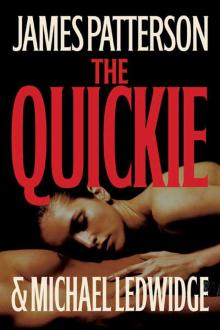 The Quickie
The Quickie Little Black Dress
Little Black Dress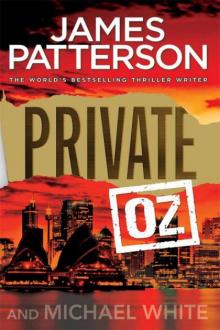 Private Oz
Private Oz Homeroom Diaries
Homeroom Diaries Gone
Gone Lifeguard
Lifeguard Kill Me if You Can
Kill Me if You Can Bullseye
Bullseye Confessions of a Murder Suspect
Confessions of a Murder Suspect Black Friday
Black Friday Manhunt
Manhunt Filthy Rich
Filthy Rich Step on a Crack
Step on a Crack Private
Private Private India
Private India Game Over
Game Over Private Sydney
Private Sydney The Murder House
The Murder House Mistress
Mistress I, Michael Bennett
I, Michael Bennett The Gift
The Gift The Postcard Killers
The Postcard Killers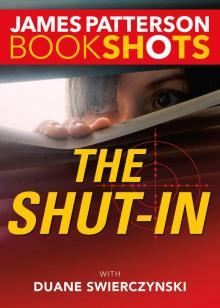 The Shut-In
The Shut-In The House Husband
The House Husband The Lost
The Lost I, Alex Cross
I, Alex Cross Going Bush
Going Bush 16th Seduction
16th Seduction The Jester
The Jester Along Came a Spider
Along Came a Spider The Lake House
The Lake House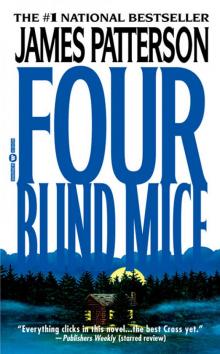 Four Blind Mice
Four Blind Mice Tick Tock
Tick Tock Private L.A.
Private L.A. Middle School, the Worst Years of My Life
Middle School, the Worst Years of My Life Cross Country
Cross Country The Final Warning
The Final Warning Word of Mouse
Word of Mouse Come and Get Us
Come and Get Us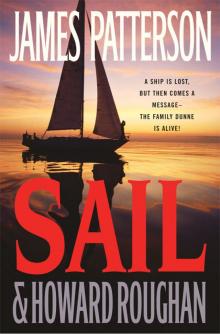 Sail
Sail I Funny TV: A Middle School Story
I Funny TV: A Middle School Story Private London
Private London Save Rafe!
Save Rafe! Swimsuit
Swimsuit Sam's Letters to Jennifer
Sam's Letters to Jennifer 3rd Degree
3rd Degree Double Cross
Double Cross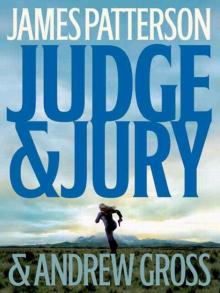 Judge & Jury
Judge & Jury Kiss the Girls
Kiss the Girls Second Honeymoon
Second Honeymoon Guilty Wives
Guilty Wives 1st to Die
1st to Die NYPD Red 4
NYPD Red 4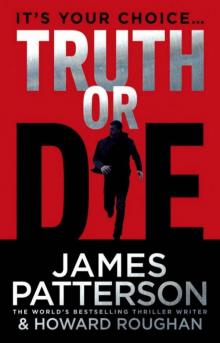 Truth or Die
Truth or Die Private Vegas
Private Vegas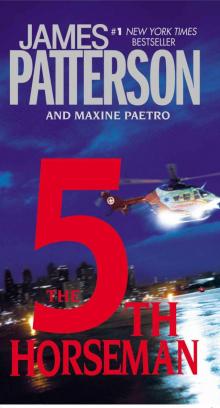 The 5th Horseman
The 5th Horseman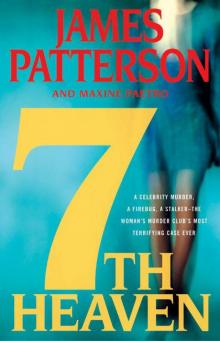 7th Heaven
7th Heaven I Even Funnier
I Even Funnier Cross My Heart
Cross My Heart Let’s Play Make-Believe
Let’s Play Make-Believe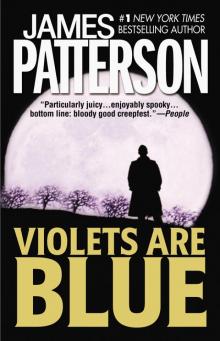 Violets Are Blue
Violets Are Blue Zoo
Zoo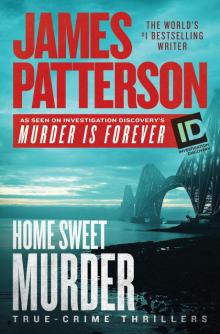 Home Sweet Murder
Home Sweet Murder The Private School Murders
The Private School Murders Alex Cross, Run
Alex Cross, Run Hunted: BookShots
Hunted: BookShots The Fire
The Fire Chase
Chase 14th Deadly Sin
14th Deadly Sin Bloody Valentine
Bloody Valentine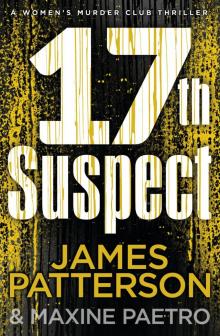 The 17th Suspect
The 17th Suspect The 8th Confession
The 8th Confession 4th of July
4th of July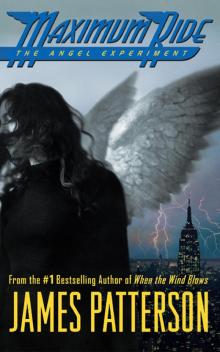 The Angel Experiment
The Angel Experiment Crazy House
Crazy House School's Out - Forever
School's Out - Forever Suzanne's Diary for Nicholas
Suzanne's Diary for Nicholas Cross Justice
Cross Justice Maximum Ride Forever
Maximum Ride Forever The Thomas Berryman Number
The Thomas Berryman Number Honeymoon
Honeymoon The Medical Examiner
The Medical Examiner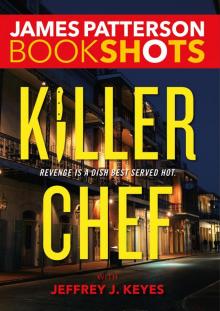 Killer Chef
Killer Chef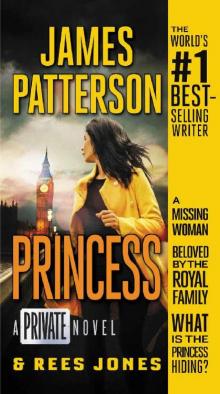 Private Princess
Private Princess Private Games
Private Games Burn
Burn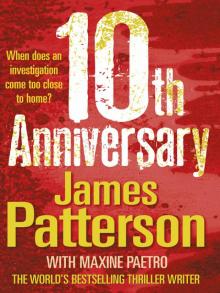 10th Anniversary
10th Anniversary I Totally Funniest: A Middle School Story
I Totally Funniest: A Middle School Story Taking the Titanic
Taking the Titanic The Lawyer Lifeguard
The Lawyer Lifeguard The 6th Target
The 6th Target Cross the Line
Cross the Line Alert
Alert Saving the World and Other Extreme Sports
Saving the World and Other Extreme Sports 1st Case
1st Case Unlucky 13
Unlucky 13 Haunted
Haunted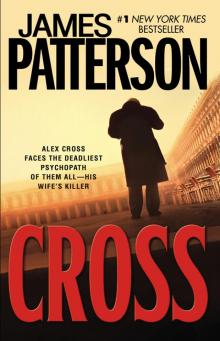 Cross
Cross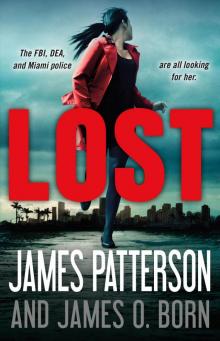 Lost
Lost 11th Hour
11th Hour Bookshots Thriller Omnibus
Bookshots Thriller Omnibus Target: Alex Cross
Target: Alex Cross Hope to Die
Hope to Die The Noise
The Noise Worst Case
Worst Case Dog's Best Friend
Dog's Best Friend Nevermore: The Final Maximum Ride Adventure
Nevermore: The Final Maximum Ride Adventure I Funny: A Middle School Story
I Funny: A Middle School Story NYPD Red
NYPD Red Till Murder Do Us Part
Till Murder Do Us Part Black & Blue
Black & Blue Fang
Fang Liar Liar
Liar Liar The Inn
The Inn Sundays at Tiffany's
Sundays at Tiffany's Middle School: Escape to Australia
Middle School: Escape to Australia Cat and Mouse
Cat and Mouse Instinct
Instinct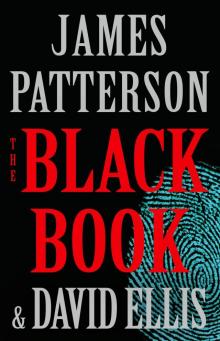 The Black Book
The Black Book London Bridges
London Bridges Toys
Toys The Last Days of John Lennon
The Last Days of John Lennon Roses Are Red
Roses Are Red Witch & Wizard
Witch & Wizard The Dolls
The Dolls The Christmas Wedding
The Christmas Wedding The River Murders
The River Murders The 18th Abduction
The 18th Abduction The 19th Christmas
The 19th Christmas Middle School: How I Got Lost in London
Middle School: How I Got Lost in London Just My Rotten Luck
Just My Rotten Luck Red Alert
Red Alert Walk in My Combat Boots
Walk in My Combat Boots Three Women Disappear
Three Women Disappear 21st Birthday
21st Birthday All-American Adventure
All-American Adventure Becoming Muhammad Ali
Becoming Muhammad Ali The Murder of an Angel
The Murder of an Angel The 13-Minute Murder
The 13-Minute Murder Rebels With a Cause
Rebels With a Cause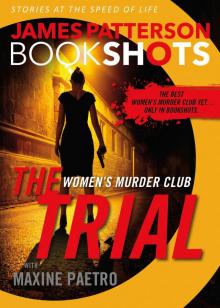 The Trial
The Trial Run for Your Life
Run for Your Life The House Next Door
The House Next Door NYPD Red 2
NYPD Red 2 Ali Cross
Ali Cross The Big Bad Wolf
The Big Bad Wolf Middle School: My Brother Is a Big, Fat Liar
Middle School: My Brother Is a Big, Fat Liar Private Paris
Private Paris Miracle on the 17th Green
Miracle on the 17th Green The People vs. Alex Cross
The People vs. Alex Cross The Beach House
The Beach House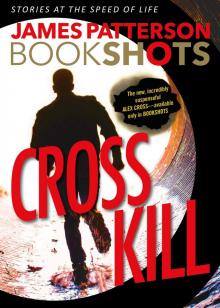 Cross Kill
Cross Kill Dog Diaries
Dog Diaries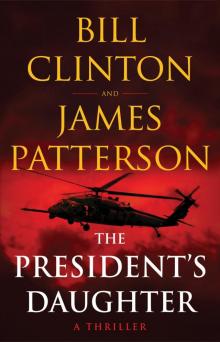 The President's Daughter
The President's Daughter Happy Howlidays
Happy Howlidays Detective Cross
Detective Cross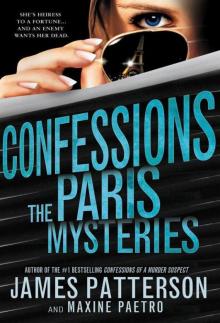 The Paris Mysteries
The Paris Mysteries Watch the Skies
Watch the Skies 113 Minutes
113 Minutes Alex Cross's Trial
Alex Cross's Trial NYPD Red 3
NYPD Red 3 Hush Hush
Hush Hush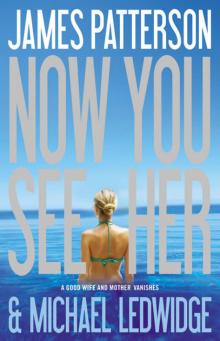 Now You See Her
Now You See Her Merry Christmas, Alex Cross
Merry Christmas, Alex Cross 2nd Chance
2nd Chance Private Royals
Private Royals Two From the Heart
Two From the Heart Max
Max I, Funny
I, Funny Blindside (Michael Bennett)
Blindside (Michael Bennett) Sophia, Princess Among Beasts
Sophia, Princess Among Beasts Armageddon
Armageddon Don't Blink
Don't Blink NYPD Red 6
NYPD Red 6 The First Lady
The First Lady Texas Outlaw
Texas Outlaw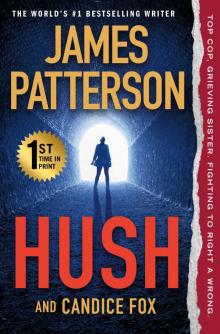 Hush
Hush Beach Road
Beach Road Private Berlin
Private Berlin The Family Lawyer
The Family Lawyer Jack & Jill
Jack & Jill The Midwife Murders
The Midwife Murders Middle School: Rafe's Aussie Adventure
Middle School: Rafe's Aussie Adventure The Murder of King Tut: The Plot to Kill the Child King
The Murder of King Tut: The Plot to Kill the Child King First Love
First Love The Dangerous Days of Daniel X
The Dangerous Days of Daniel X Hawk
Hawk Private Delhi
Private Delhi The 20th Victim
The 20th Victim The Shadow
The Shadow Katt vs. Dogg
Katt vs. Dogg The Palm Beach Murders
The Palm Beach Murders 2 Sisters Detective Agency
2 Sisters Detective Agency Humans, Bow Down
Humans, Bow Down You've Been Warned
You've Been Warned Cradle and All
Cradle and All 20th Victim: (Women’s Murder Club 20) (Women's Murder Club)
20th Victim: (Women’s Murder Club 20) (Women's Murder Club) Season of the Machete
Season of the Machete Woman of God
Woman of God Mary, Mary
Mary, Mary Blindside
Blindside Invisible
Invisible The Chef
The Chef Revenge
Revenge See How They Run
See How They Run Pop Goes the Weasel
Pop Goes the Weasel 15th Affair
15th Affair Middle School: Get Me Out of Here!
Middle School: Get Me Out of Here! Middle School: How I Survived Bullies, Broccoli, and Snake Hill
Middle School: How I Survived Bullies, Broccoli, and Snake Hill From Hero to Zero - Chris Tebbetts
From Hero to Zero - Chris Tebbetts G'day, America
G'day, America Max Einstein Saves the Future
Max Einstein Saves the Future The Cornwalls Are Gone
The Cornwalls Are Gone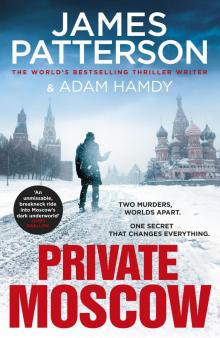 Private Moscow
Private Moscow Two Schools Out - Forever
Two Schools Out - Forever Hollywood 101
Hollywood 101 Deadly Cargo: BookShots
Deadly Cargo: BookShots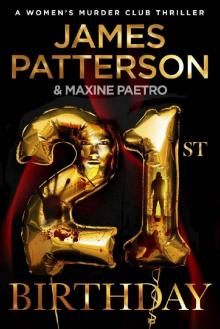 21st Birthday (Women's Murder Club)
21st Birthday (Women's Murder Club) The Sky Is Falling
The Sky Is Falling Cajun Justice
Cajun Justice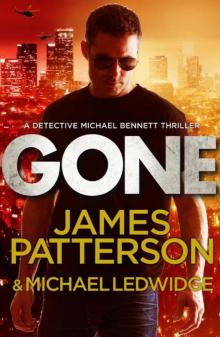 Bennett 06 - Gone
Bennett 06 - Gone The House of Kennedy
The House of Kennedy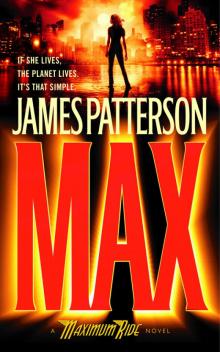 Waterwings
Waterwings Murder is Forever, Volume 2
Murder is Forever, Volume 2 Maximum Ride 02
Maximum Ride 02 Treasure Hunters--The Plunder Down Under
Treasure Hunters--The Plunder Down Under Private Royals: BookShots (A Private Thriller)
Private Royals: BookShots (A Private Thriller) After the End
After the End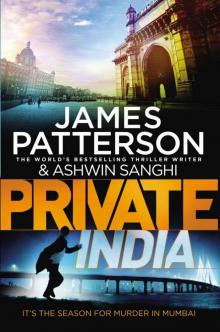 Private India: (Private 8)
Private India: (Private 8)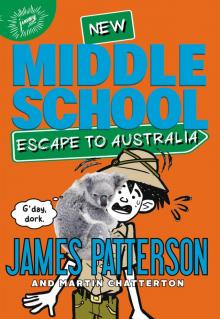 Escape to Australia
Escape to Australia WMC - First to Die
WMC - First to Die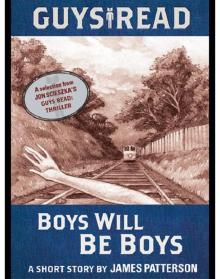 Boys Will Be Boys
Boys Will Be Boys The Red Book
The Red Book 11th hour wmc-11
11th hour wmc-11 Hidden
Hidden You've Been Warned--Again
You've Been Warned--Again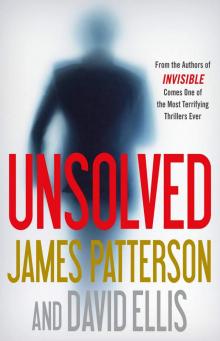 Unsolved
Unsolved Pottymouth and Stoopid
Pottymouth and Stoopid Hope to Die: (Alex Cross 22)
Hope to Die: (Alex Cross 22) The Moores Are Missing
The Moores Are Missing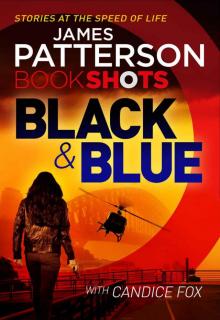 Black & Blue: BookShots (Detective Harriet Blue Series)
Black & Blue: BookShots (Detective Harriet Blue Series) Airport - Code Red: BookShots
Airport - Code Red: BookShots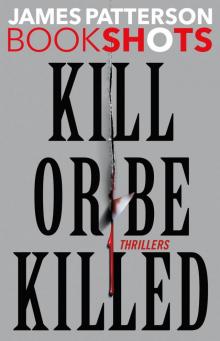 Kill or Be Killed
Kill or Be Killed School's Out--Forever
School's Out--Forever When the Wind Blows
When the Wind Blows Heist: BookShots
Heist: BookShots Murder of Innocence (Murder Is Forever)
Murder of Innocence (Murder Is Forever) Red Alert_An NYPD Red Mystery
Red Alert_An NYPD Red Mystery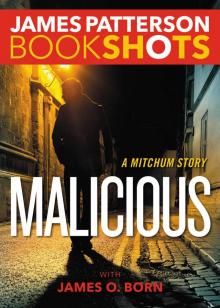 Malicious
Malicious Scott Free
Scott Free The Summer House
The Summer House French Kiss
French Kiss Treasure Hunters
Treasure Hunters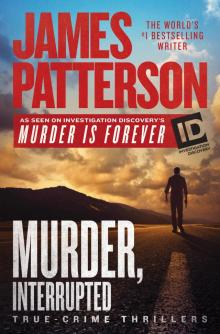 Murder Is Forever, Volume 1
Murder Is Forever, Volume 1 Secret of the Forbidden City
Secret of the Forbidden City Cross the Line: (Alex Cross 24)
Cross the Line: (Alex Cross 24) Witch & Wizard: The Fire
Witch & Wizard: The Fire![Women's Murder Club [06] The 6th Target Read online](http://i1.bookreadfree.com/i/03/24/womens_murder_club_06_the_6th_target_preview.jpg) Women's Murder Club [06] The 6th Target
Women's Murder Club [06] The 6th Target Cross My Heart ac-21
Cross My Heart ac-21 Alex Cross’s Trial ак-15
Alex Cross’s Trial ак-15 Alex Cross 03 - Jack & Jill
Alex Cross 03 - Jack & Jill Liar Liar: (Harriet Blue 3) (Detective Harriet Blue Series)
Liar Liar: (Harriet Blue 3) (Detective Harriet Blue Series) Cross Country ак-14
Cross Country ак-14 Honeymoon h-1
Honeymoon h-1 Maximum Ride: The Angel Experiment
Maximum Ride: The Angel Experiment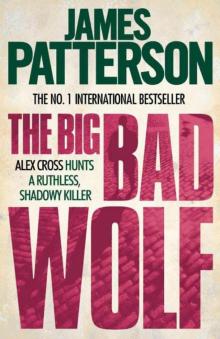 The Big Bad Wolf ак-9
The Big Bad Wolf ак-9 Dead Heat: BookShots (Book Shots)
Dead Heat: BookShots (Book Shots)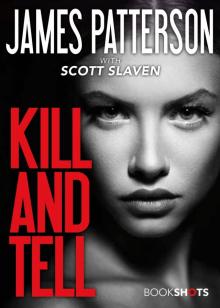 Kill and Tell
Kill and Tell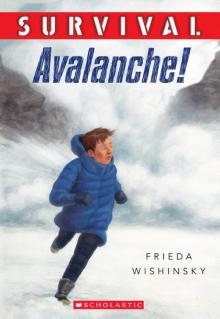 Avalanche
Avalanche Robot Revolution
Robot Revolution Public School Superhero
Public School Superhero 12th of Never
12th of Never Max: A Maximum Ride Novel
Max: A Maximum Ride Novel All-American Murder
All-American Murder Murder Games
Murder Games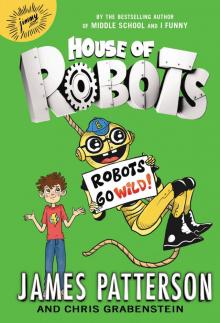 Robots Go Wild!
Robots Go Wild! My Life Is a Joke
My Life Is a Joke Private: Gold
Private: Gold Demons and Druids
Demons and Druids Jacky Ha-Ha
Jacky Ha-Ha Postcard killers
Postcard killers Princess: A Private Novel
Princess: A Private Novel Kill Alex Cross ac-18
Kill Alex Cross ac-18 12th of Never wmc-12
12th of Never wmc-12 The Murder of King Tut
The Murder of King Tut I Totally Funniest
I Totally Funniest Cross Fire ак-17
Cross Fire ак-17 Count to Ten
Count to Ten![Women's Murder Club [10] 10th Anniversary Read online](http://i1.bookreadfree.com/i1/03/30/womens_murder_club_10_10th_anniversary_preview.jpg) Women's Murder Club [10] 10th Anniversary
Women's Murder Club [10] 10th Anniversary![Women's Murder Club [01] 1st to Die Read online](http://i1.bookreadfree.com/i1/03/31/womens_murder_club_01_1st_to_die_preview.jpg) Women's Murder Club [01] 1st to Die
Women's Murder Club [01] 1st to Die I, Michael Bennett mb-5
I, Michael Bennett mb-5 Nooners
Nooners![Women's Murder Club [08] The 8th Confession Read online](http://i1.bookreadfree.com/i1/04/03/womens_murder_club_08_the_8th_confession_preview.jpg) Women's Murder Club [08] The 8th Confession
Women's Murder Club [08] The 8th Confession Private jm-1
Private jm-1 Treasure Hunters: Danger Down the Nile
Treasure Hunters: Danger Down the Nile Worst Case mb-3
Worst Case mb-3 Don’t Blink
Don’t Blink The Games
The Games The Medical Examiner: A Women's Murder Club Story
The Medical Examiner: A Women's Murder Club Story Black Market
Black Market Gone mb-6
Gone mb-6![Women's Murder Club [02] 2nd Chance Read online](http://i1.bookreadfree.com/i1/04/04/womens_murder_club_02_2nd_chance_preview.jpg) Women's Murder Club [02] 2nd Chance
Women's Murder Club [02] 2nd Chance French Twist
French Twist Kenny Wright
Kenny Wright Manhunt: A Michael Bennett Story
Manhunt: A Michael Bennett Story Cross Kill: An Alex Cross Story
Cross Kill: An Alex Cross Story Confessions of a Murder Suspect td-1
Confessions of a Murder Suspect td-1 Second Honeymoon h-2
Second Honeymoon h-2 Chase_A BookShot_A Michael Bennett Story
Chase_A BookShot_A Michael Bennett Story Confessions: The Paris Mysteries
Confessions: The Paris Mysteries![Women's Murder Club [09] The 9th Judgment Read online](http://i1.bookreadfree.com/i2/04/08/womens_murder_club_09_the_9th_judgment_preview.jpg) Women's Murder Club [09] The 9th Judgment
Women's Murder Club [09] The 9th Judgment Absolute Zero
Absolute Zero Nevermore: The Final Maximum Ride Adventure mr-8
Nevermore: The Final Maximum Ride Adventure mr-8 Angel: A Maximum Ride Novel mr-7
Angel: A Maximum Ride Novel mr-7 Juror #3
Juror #3 Million-Dollar Mess Down Under
Million-Dollar Mess Down Under The Verdict: BookShots (A Jon Roscoe Thriller)
The Verdict: BookShots (A Jon Roscoe Thriller)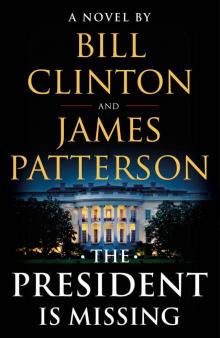 The President Is Missing: A Novel
The President Is Missing: A Novel![Women's Murder Club [04] 4th of July Read online](http://i1.bookreadfree.com/i2/04/06/womens_murder_club_04_4th_of_july_preview.jpg) Women's Murder Club [04] 4th of July
Women's Murder Club [04] 4th of July The Hostage: BookShots (Hotel Series)
The Hostage: BookShots (Hotel Series) $10,000,000 Marriage Proposal
$10,000,000 Marriage Proposal Diary of a Succubus
Diary of a Succubus Unbelievably Boring Bart
Unbelievably Boring Bart Angel: A Maximum Ride Novel
Angel: A Maximum Ride Novel Stingrays
Stingrays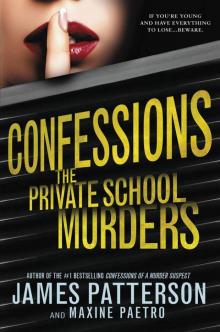 Confessions: The Private School Murders
Confessions: The Private School Murders Stealing Gulfstreams
Stealing Gulfstreams![Women's Murder Club [05] The 5th Horseman Read online](http://i1.bookreadfree.com/i2/04/05/womens_murder_club_05_the_5th_horseman_preview.jpg) Women's Murder Club [05] The 5th Horseman
Women's Murder Club [05] The 5th Horseman Zoo 2
Zoo 2 Jack Morgan 02 - Private London
Jack Morgan 02 - Private London Treasure Hunters--Quest for the City of Gold
Treasure Hunters--Quest for the City of Gold The Christmas Mystery
The Christmas Mystery Murder in Paradise
Murder in Paradise Kidnapped: BookShots (A Jon Roscoe Thriller)
Kidnapped: BookShots (A Jon Roscoe Thriller)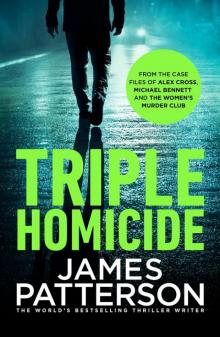 Triple Homicide_Thrillers
Triple Homicide_Thrillers 16th Seduction: (Women’s Murder Club 16) (Women's Murder Club)
16th Seduction: (Women’s Murder Club 16) (Women's Murder Club)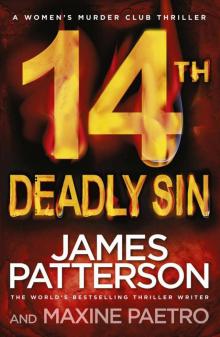 14th Deadly Sin: (Women’s Murder Club 14)
14th Deadly Sin: (Women’s Murder Club 14) Texas Ranger
Texas Ranger Witch & Wizard 04 - The Kiss
Witch & Wizard 04 - The Kiss![Women's Murder Club [03] 3rd Degree Read online](http://i1.bookreadfree.com/i2/04/12/womens_murder_club_03_3rd_degree_preview.jpg) Women's Murder Club [03] 3rd Degree
Women's Murder Club [03] 3rd Degree Break Point: BookShots
Break Point: BookShots Alex Cross 04 - Cat & Mouse
Alex Cross 04 - Cat & Mouse Maximum Ride
Maximum Ride Fifty Fifty: (Harriet Blue 2) (Detective Harriet Blue Series)
Fifty Fifty: (Harriet Blue 2) (Detective Harriet Blue Series) Alex Cross 02 - Kiss the Girls
Alex Cross 02 - Kiss the Girls The President Is Missing
The President Is Missing Hunted
Hunted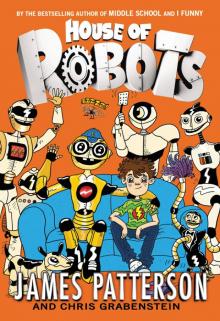 House of Robots
House of Robots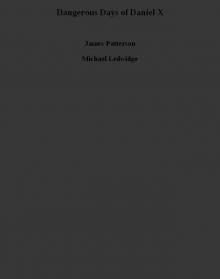 Dangerous Days of Daniel X
Dangerous Days of Daniel X Tick Tock mb-4
Tick Tock mb-4 10th Anniversary wmc-10
10th Anniversary wmc-10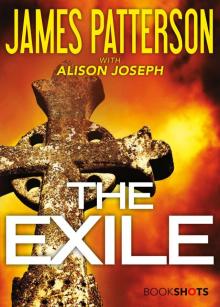 The Exile
The Exile Private Games-Jack Morgan 4 jm-4
Private Games-Jack Morgan 4 jm-4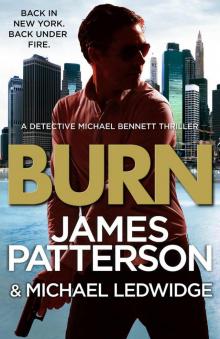 Burn: (Michael Bennett 7)
Burn: (Michael Bennett 7) Laugh Out Loud
Laugh Out Loud The People vs. Alex Cross: (Alex Cross 25)
The People vs. Alex Cross: (Alex Cross 25)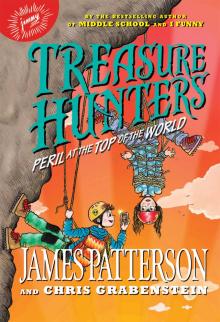 Peril at the Top of the World
Peril at the Top of the World I Funny TV
I Funny TV Merry Christmas, Alex Cross ac-19
Merry Christmas, Alex Cross ac-19 #1 Suspect jm-3
#1 Suspect jm-3 Fang: A Maximum Ride Novel
Fang: A Maximum Ride Novel![Women's Murder Club [07] 7th Heaven Read online](http://i1.bookreadfree.com/i2/04/13/womens_murder_club_07_7th_heaven_preview.jpg) Women's Murder Club [07] 7th Heaven
Women's Murder Club [07] 7th Heaven The End
The End